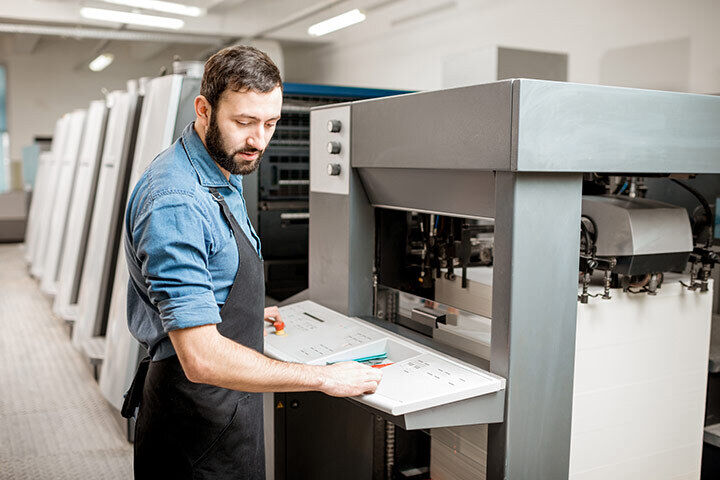The history of wide-format digital printing is very short compared with that of the print industry overall because wide-format digital printing only emerged at the end of the last century. So let`s talk about wide format printing as an art.
What is Wide Format Printing?
Wide-format digital printing has evolved rapidly in the past 15 years and the inkjet technology was pioneered jointly by HP and Canon. The first wide format digital printers were Electrostatic technology, which pre-dates inkjet and was pioneered by Xerox. So what is Wide Format Printing?
Just about every market research study we’ve seen has concluded that wide-format is not only holding its own across all print segments, but it also has an extremely bright future.
Wide format printers are used to produce products for the POS sector including banners, posters, trade show graphics, wallpaper, backlit film, vehicle image wraps, presentation backdrops, and any other large format artwork or signage. Showcase creativity with your own photo or collage designs on framed, customized canvas prints. Make it for gifting or decorating your home and office walls. Many people are interested in whether large-format printing can be done on canvas. The answer is that it is certainly possible to print on canvas, and the results can be stunning.

Wide-Format Printing
As technology continuously advances and becomes better, printing technologies also progress. Wide-format printers are beneficial in small, medium-sized, and larger offices for many reasons. One of the most beneficial services that a wide format printer offers is the ability for the user to custom design the scale and shape of what they’re printing. This is what makes these printers so useful for businesses’ marketing materials. Wide-format printing has a lot of options and benefits. With so many choices, businesses are able to print whatever they need, such as large maps, blueprints, posters, or large ads. Whether it’s for your office or a client, wide-format printing is the solution for the needs of your “larger” projects.

Wide-Format Printing Cost
When we deal with wide-format printers, there is no limit. There is always room for improvement to get bigger and better, but this also includes getting more expensive. If you’re interested in wide-format printing costs or already using this technique in your company, there are different possibilities to cut the high prices. In the following, you’ll read about three examples to make wide-format printing less costly, but there are many other little aspects that – if changed – can have a huge impact on production costs.
А) It’s a common phenomenon that high amounts cost proportionally less than low amounts of almost anything. This is the case for entrance fees at theme parks or printed-out flyers. Unsurprisingly, when it comes to ink cartridges, the large ones might be more costly when purchasing, but first of all, they outlast the smaller cartridges, and second of all, the price per milliliter is usually cheaper.
B) Did you ever print something big and colorful for an important customer and only afterward realize that something went wrong with the format? This means the whole printout goes straight into the paper bin and not only ink is wasted, but also a lot of paper. Print previews can prevent those situations because you can see what your project will look like on paper before hitting the print button.
Also, it can cut costs and waste if employees monitor their printing orders. If something goes wrong and the paper is lopsided, they still have time to stop the printing process and reduce the paper and ink that go to waste.
C) Fast printing means that there is more capacity for other projects and the whole workflow is sped up.
D) If you’d like to print out your work in progress for internal uses, you usually don’t need high-resolution or photo-quality settings. That’s what the draft mode is for. Some printers can even be set up to print in draft mode automatically so that employees have to actively select the high-resolution mode for final printouts. Of course, a detailed briefing of your employees is essential to make them understand the impact their printing behavior can have on the budget and the environment.
UV printing is a distinctive form of digital printing that involves the use of ultraviolet (UV) light to cure or dry UV ink almost as soon as it is applied to a prepared substrate. The UV printing process is unique. The substrate can include paper as well as any other material that the printer can accept. This can be foam board, aluminum, or acrylic. As the UV ink is distributed onto the substrate, specialized ultraviolet lights within the printer are immediately applied to the material over the top of the ink, drying it and adhering it to the substrate. Find or make your ideal sticker shape. We have shapes for every business, personality, or project, and customizable sticker designs for every shape.

Conclusion. When choosing a printing service, look for one that offers high-quality printing at a reasonable price. Mastering the art of printing requires careful planning, design, printing, binding, finishing, and distribution. By paying attention to these critical elements, you can create a professional-looking printing product that effectively communicates your message. Let this article become for you a comprehensive guide, through which we tried to convey the minimum information that is worth knowing about wide-format printing. However, to avoid disappointment, entrust your printing needs to professional printing companies that will guarantee the desired result.

